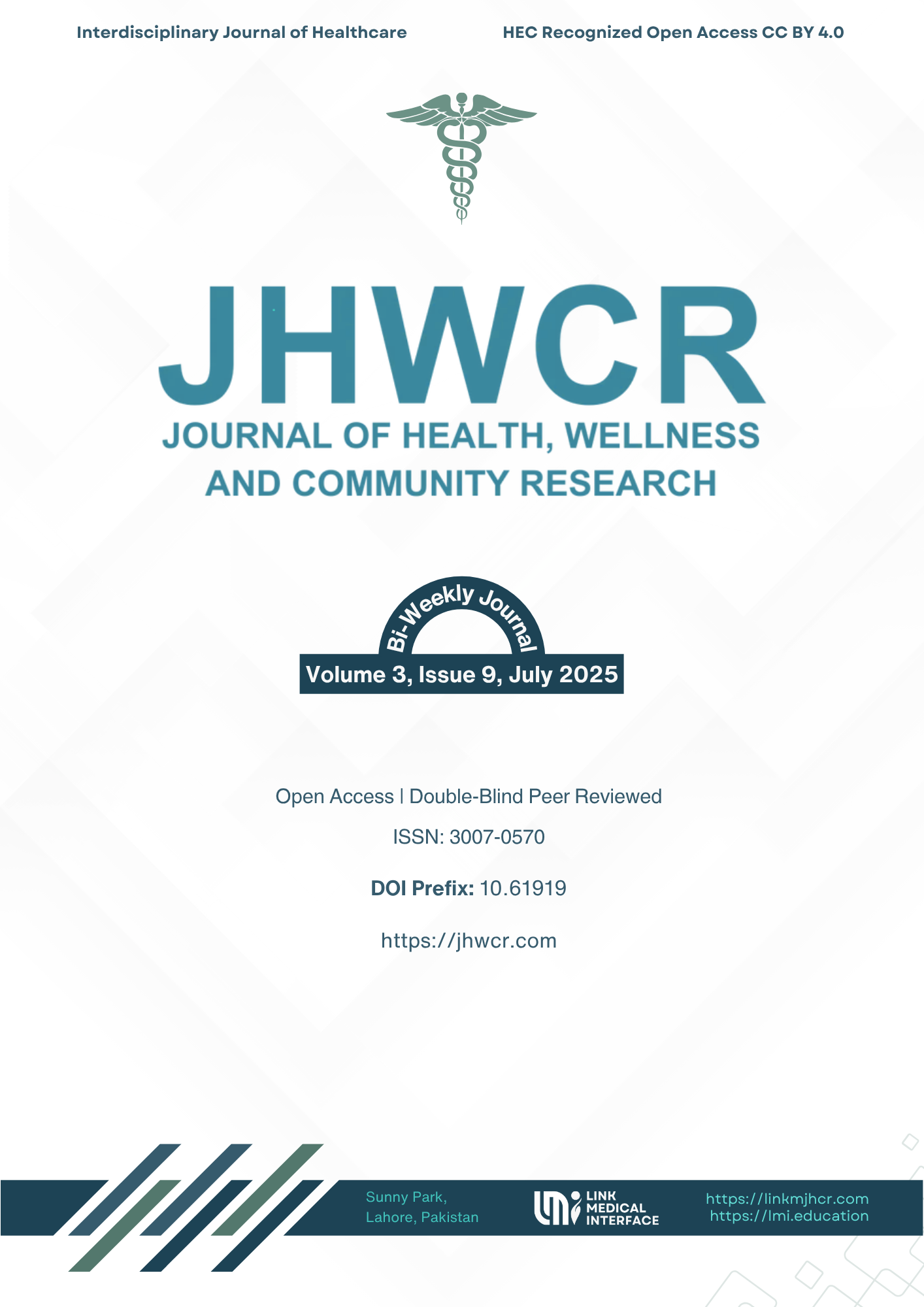Electrocardiogram as a Predictor of Outcome in Cerebral Vascular Accident Patients: A Cross-Sectional Study in Sheikh Zayed Hospital Rahim Yar Khan
DOI:
https://doi.org/10.61919/yy6a9m40Keywords:
Cerebrovascular accident, electrocardiogram, QT prolongation, P wave abnormality, mortality, stroke prognosis, emergency medicineAbstract
Background: Cerebrovascular accidents (CVAs) are a leading cause of morbidity and mortality worldwide, particularly in low- and middle-income countries. Electrocardiographic (ECG) abnormalities are frequently observed in stroke patients and may reflect neurocardiogenic disturbances or underlying cardiac comorbidities. Their potential utility as prognostic markers remains underexplored in resource-limited emergency settings. Objective: To determine the prognostic significance of ECG abnormalities in predicting in-hospital outcomes among patients presenting with acute CVA. Methods: A cross-sectional observational study was conducted at the emergency department of Sheikh Zayed Hospital, Rahim Yar Khan, Pakistan, from July to December 2023. A total of 202 adult patients clinically suspected of CVA underwent baseline ECG evaluation on admission. Specific ECG abnormalities—including P wave changes, QT prolongation, T wave inversion, bundle branch blocks, and axis deviations—were recorded. Outcomes were categorized as discharge, ICU admission, or in-hospital death. Associations between ECG findings and outcomes were analyzed using chi-square tests and odds ratios, with p<0.05 considered significant. Results: Among 202 patients (mean age 58.65 ± 14.14 years), 54 (26.7%) died. QT prolongation (100% mortality, p=0.004), P wave abnormality (66.7% mortality, p=0.006), and T wave inversion (52.9% mortality, p=0.038) were significantly associated with in-hospital death. Mortality also increased with age >65 and cumulative ECG risk features. Conclusion: Early ECG abnormalities—especially QT prolongation, P wave changes, and T wave inversion—are significant predictors of mortality in acute stroke and should be incorporated into early risk stratification protocols in emergency care.
Downloads
Published
Issue
Section
License
Copyright (c) 2025 Jam Javed Iqbal, Hafiz Haseeb Ahsan, Muhammad Shoaib Akhtar, Naila Nawaz, Shumaila Karim Khan, Anfal Hamza, Matiullah Hashimi (Author)

This work is licensed under a Creative Commons Attribution 4.0 International License.


